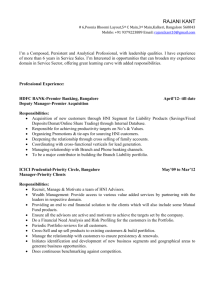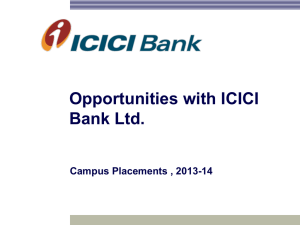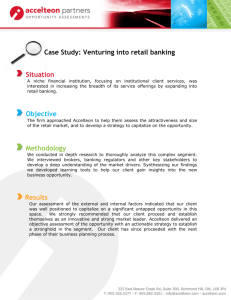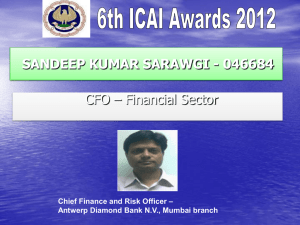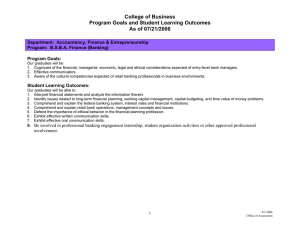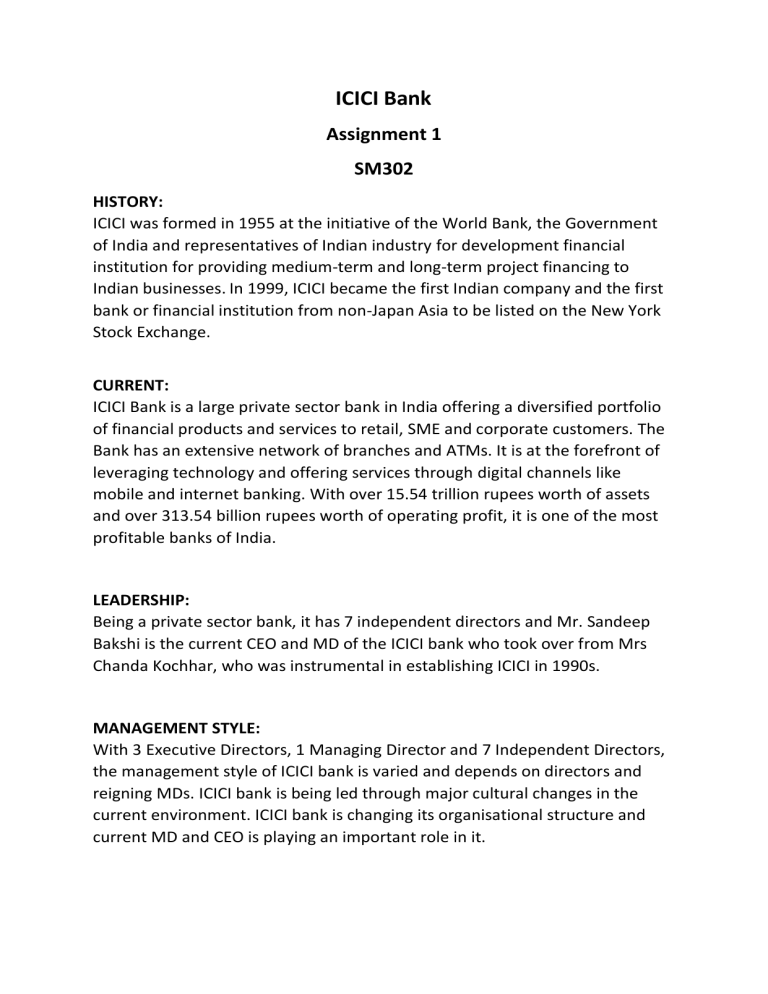
ICICI Bank Assignment 1 SM302 HISTORY: ICICI was formed in 1955 at the initiative of the World Bank, the Government of India and representatives of Indian industry for development financial institution for providing medium-term and long-term project financing to Indian businesses. In 1999, ICICI became the first Indian company and the first bank or financial institution from non-Japan Asia to be listed on the New York Stock Exchange. CURRENT: ICICI Bank is a large private sector bank in India offering a diversified portfolio of financial products and services to retail, SME and corporate customers. The Bank has an extensive network of branches and ATMs. It is at the forefront of leveraging technology and offering services through digital channels like mobile and internet banking. With over 15.54 trillion rupees worth of assets and over 313.54 billion rupees worth of operating profit, it is one of the most profitable banks of India. LEADERSHIP: Being a private sector bank, it has 7 independent directors and Mr. Sandeep Bakshi is the current CEO and MD of the ICICI bank who took over from Mrs Chanda Kochhar, who was instrumental in establishing ICICI in 1990s. MANAGEMENT STYLE: With 3 Executive Directors, 1 Managing Director and 7 Independent Directors, the management style of ICICI bank is varied and depends on directors and reigning MDs. ICICI bank is being led through major cultural changes in the current environment. ICICI bank is changing its organisational structure and current MD and CEO is playing an important role in it. Sandeep Bakshi believes in letting his team grow as a leader. The bank is changing its operational environment in past two years. Frontline bankers have the core responsibility of providing the best possible experience to customers. Co-operation among teams has to be boosted and approach has been taken to remove titles such as DGM, SGM in 400 member core group with titles indicative of the responsibilities. Streamlined and simplified team structure boosts cooperation between teams. Employees are being made felt appreciated. Regular pay hikes and front-end employees are being given better perks for their work. Bank is also increasing its culture of experimentation, breaking down markets based on PIN codes and conducting micro-experiments whose results are expect to be scaled on a broader scale. ORGANISATIONAL STRUCTURE: The organisation according to them is dynamic, constantly evolving and responsive to changes both in the external and internal environments. The organization structure is divided into five principal groups – Retail Banking, Wholesale Banking, Project Finance & Special Assets Management, International Business and Corporate Centre. The Retail Banking Group comprises ICICI Bank’s retail assets business including various retail credit products, retail liabilities (including their own deposit accounts as well as distribution of third part liability products) and rural microbanking. The Wholesale Banking Group comprises ICICI Bank’s corporate banking business including credit products and banking services, with separate dedicated groups for large corporates, Government and public sector entities and emerging corporates. Treasury, structured finance and credit portfolio management also form part of this group. The Project Finance Group comprises the project finance operations for infrastructure, oil & gas, manufacturing and shipping sectors. The Special Assets Management Group is responsible for large non-performing loans and accounts under watch. The International Business Group is responsible for ICICI Bank’s international operations as well as coordinating the international strategies and alliances of its subsidiaries and affiliates. The Corporate Centre comprises all shared services and corporate functions, including finance and secretarial, investor relations, risk management, legal, human resources and corporate branding and communications. Prepared By: Shailendra Kumar Kusumbiwal 191CH045
